Tips & Tricks | Estimated Read time – 8:19
Endurance event organizers know their business better than anyone (or anything) else. Artificial intelligence will never be able to replace what experienced event organizers like you bring to the table.
However, using artificial intelligence tools can significantly reduce your workload by streamlining essential yet time-consuming tasks like content creation, multimedia production, and data analysis.
By embracing AI tools for events, you can spend more time on the tasks that require your complete attention. But where should you start and what tools can you rely on in this quickly growing industry?
We’ve picked out some of the best AI tools endurance event organizers can use to get more done. Keep reading to find out how to use these powerful tools to your advantage.
Create Written Content for Your Event

How many hours have you spent writing content for your event’s website, emails to participants and volunteers, posts for your social media channels, or marketing campaigns? We’re betting it’s many.
Using an AI writing tool, you can produce high-quality content for any platform in a fraction of the time it takes to do it yourself.
Whether you need website content, blog posts, emails, social media posts, or marketing campaigns, AI writing tools can generate engaging copy that matches your endurance event’s tone of voice and speaks directly to your participants.
The best part is how easy it is. Tools like ChatGPT and CopyAI, both available as free or paid services, are designed to make creating new AI content as intuitive as possible. All you need to do is craft an effective prompt with the most important and relevant information and the AI tool will deliver your copy in seconds.
How to make effective AI prompts for written content:
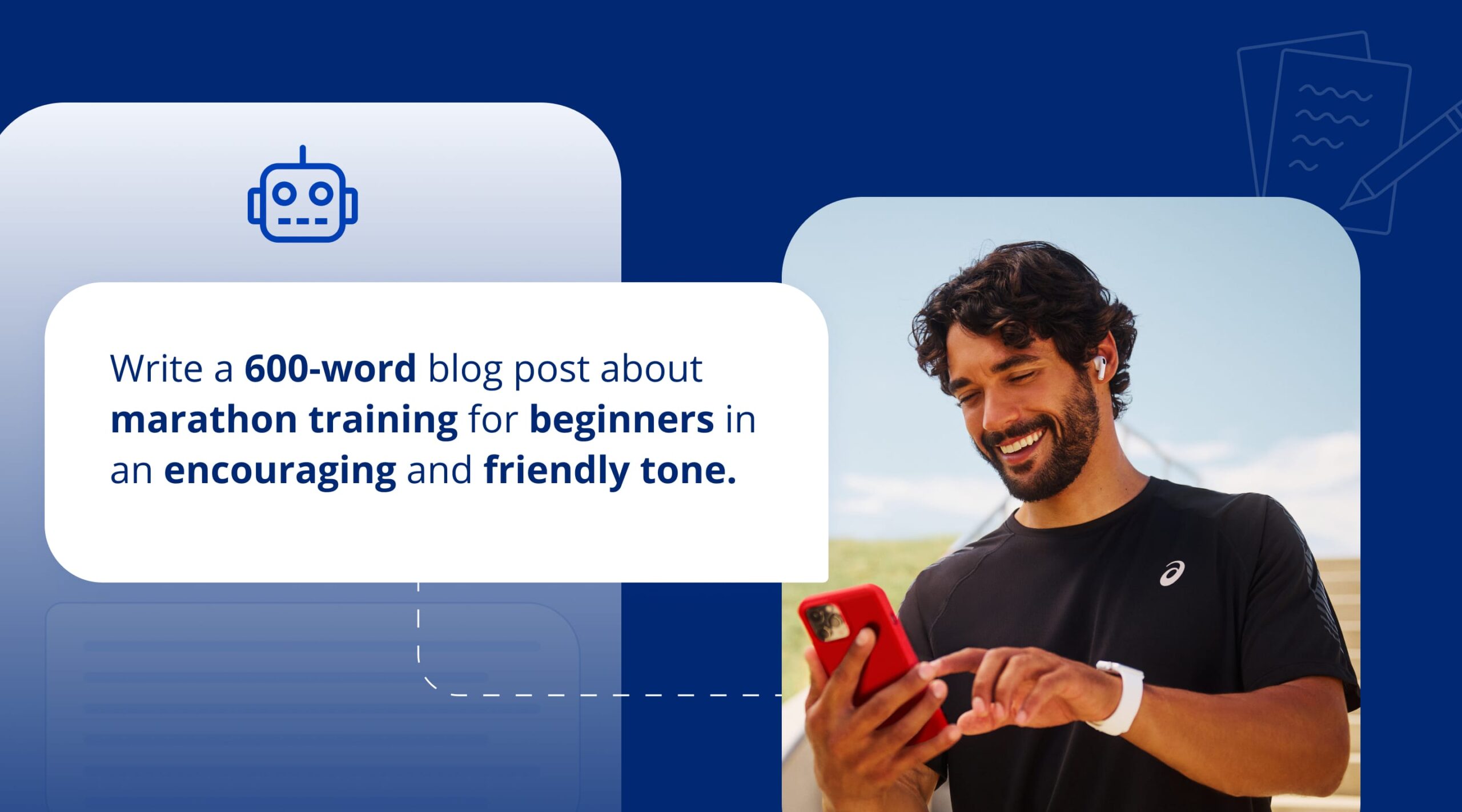
1. Be Clear and Specific: Define what type of content you need (e.g., “Write a blog post about marathon training for beginners”).
2. Include Key Details: Provide the necessary context or information (e.g., “Focus on a 12-week plan, include running schedules, and tips for injury prevention”).
3. Set the Tone: Specify your desired tone or style for the content (e.g., “Write in a friendly and encouraging tone”).
4. Define Structure: Mention any preferred structure for the content (e.g., “Use an introduction, three main sections, and a conclusion”).
5. Ask for Length: Specify word count, if necessary (e.g., “Write 600 words”).
6. Provide Examples: Reference any existing content or styles you’d like the content to mimic (e.g., “Write in a style similar to popular running blogs”).
7. Refine and Iterate: Review the output and ask for adjustments to the content as necessary (e.g., “Make the tone more casual” or “Add more statistics”).
Example Prompt:
“Write a 600-word blog post about marathon training for beginners. Focus on creating a 12-week training plan, including weekly running schedules, rest days, and tips for preventing injuries. Emphasize the importance of gradual progress and staying motivated throughout the training. Write in a friendly and encouraging tone, making the content accessible for first-time marathon runners. Structure the blog post with an introduction, three main sections (Training Plan, Injury Prevention, and Staying Motivated), and a conclusion. Include practical advice and examples of common challenges beginners might face.”
Plan & Execute Your Social Media Strategy
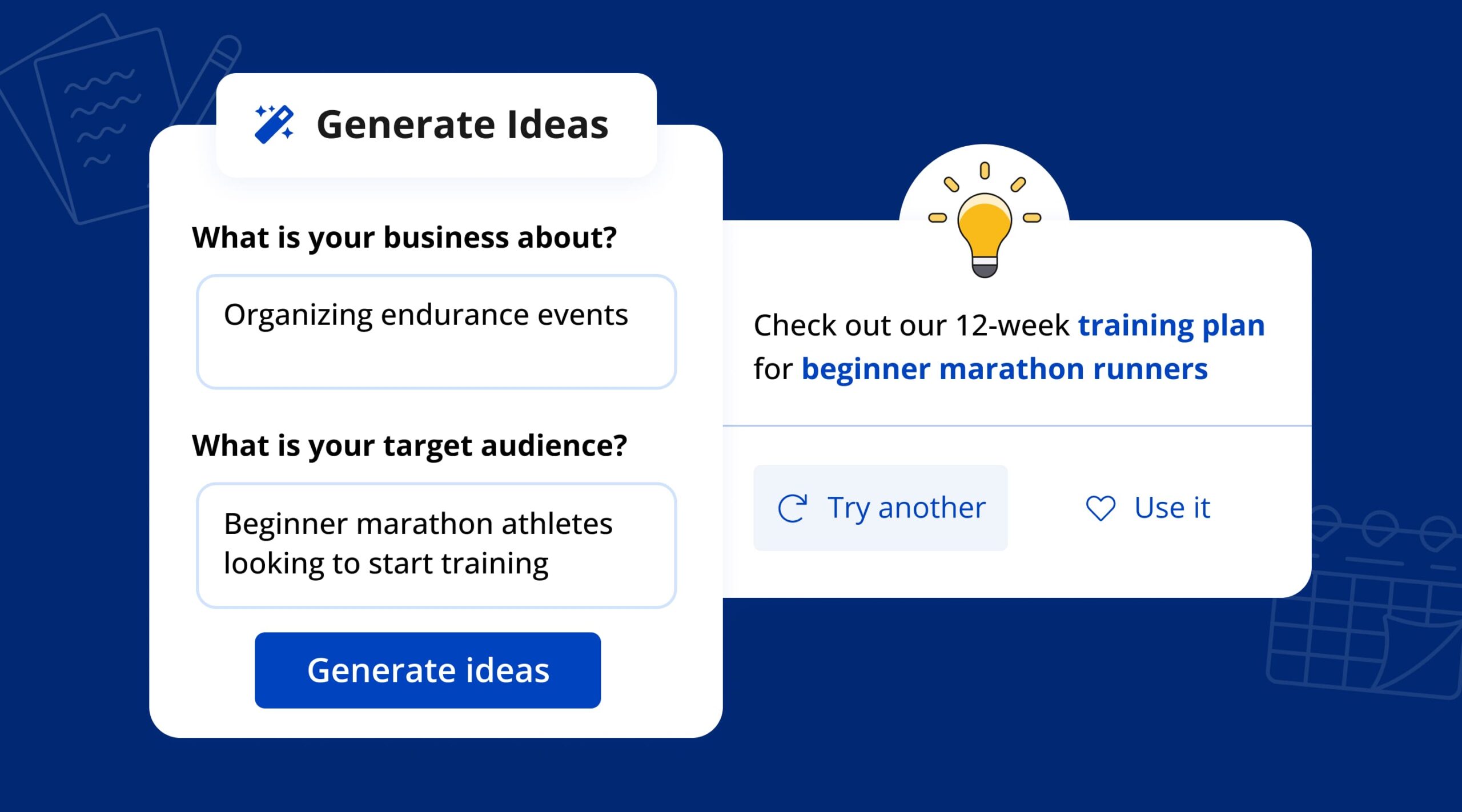
Every endurance event should be using social media for promotion. However, maintaining an active and consistent presence on social media can be overwhelming for anyone, let alone a busy event organizer.
Effective social media management requires planning, brainstorming, writing, posting, reposting, responding, and sometimes photography and videography.
AI social media tools like the Buffer AI Assistant are designed to help ease that burden.
You can use these AI tools to create posting schedules, suggest optimal post times, brainstorm content ideas, write captions tailored to different platforms or audiences, and recommend the best hashtags based on trends and audience behavior.
Buffer offers free and paid versions of its social media tools, including a free version with its AI Assistant.
Generate Pro-Quality Images & Graphics
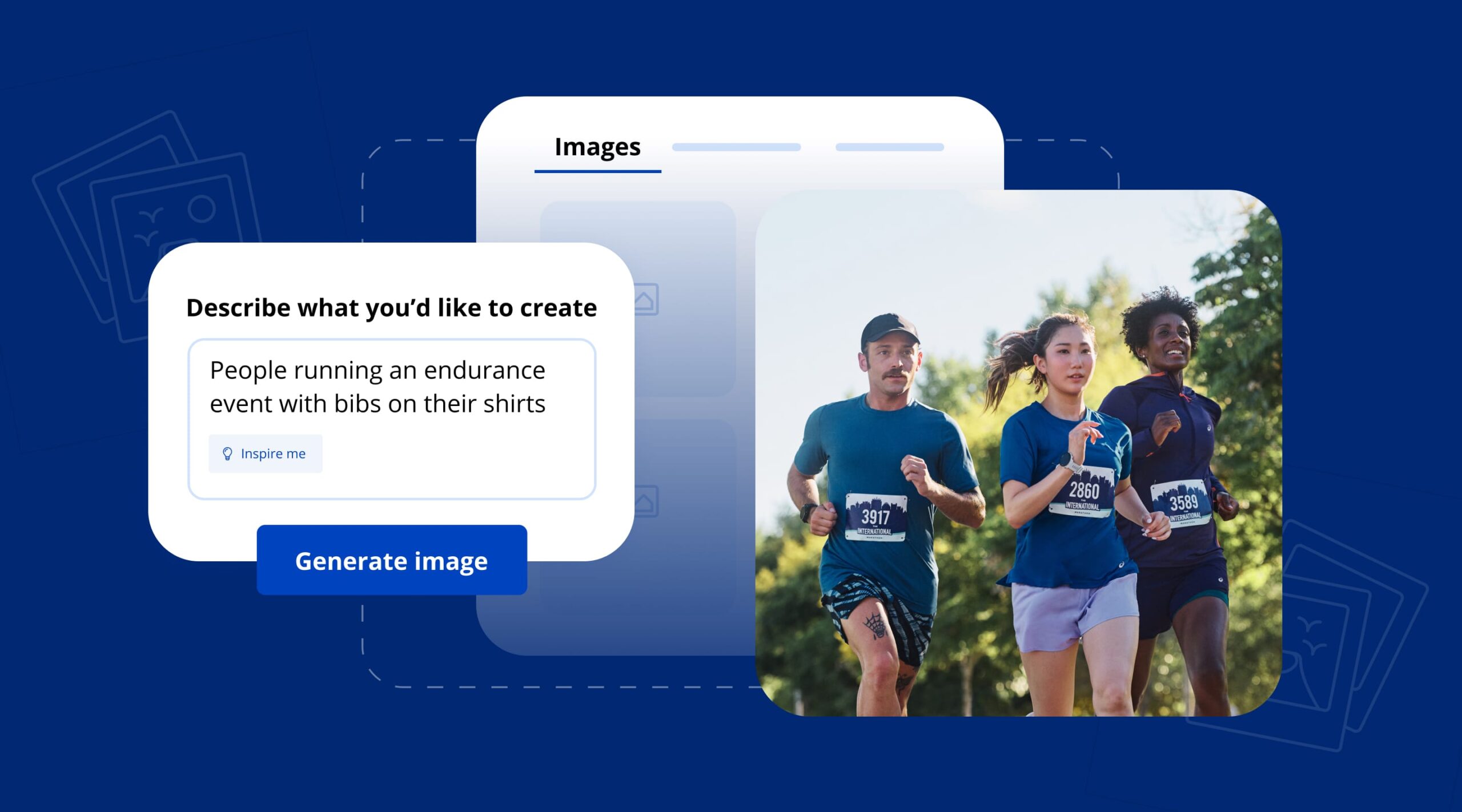
Maintaining a strong brand is an integral part of organizing successful endurance events. That includes creating consistent branded images and graphics across all platforms.
The problem is that creating event-branded materials is typically costly and time-consuming. Online graphic design tools like Canva are changing that.
Canva’s intuitive user interface and drag-and-drop features make it easy to use — even for people without graphic design experience. In just a few clicks, you can create visually engaging images and branded graphics event posters, social media posts, and email banners without hiring a professional designer.
Canva also offers templates and layouts, adjusts designs for various platforms, and gives you access to a library of AI-generated images and icons.
This allows you to streamline your content creation, maintain a strong brand presence, and boost participant engagement more efficiently than ever.
Create Engaging Videos
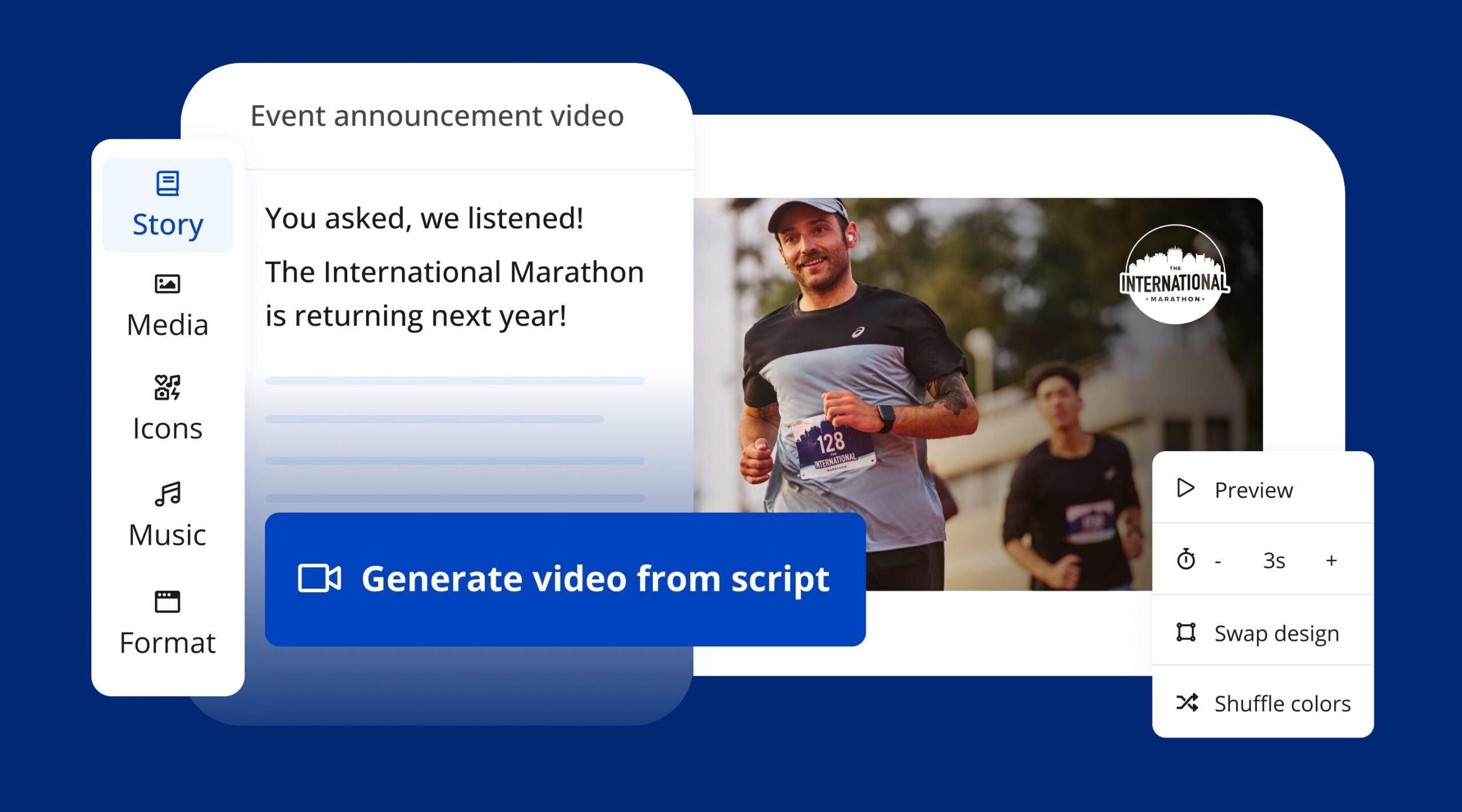
You don’t need a professional videographer to create engaging videos that will capture your participants’ attention.
With an AI video generator like Lumen5, you input text-based content like an event announcement, key event details for your participants, or even blog or email content, to create a professional-quality video for any platform in just minutes.
Once you’ve provided your text, Lumen5 will use artificial intelligence to suggest relevant stock footage, music and transitions for your video, making it simple to create a great video without any advanced editing skills.
Lumen5’s AI can also tailor video templates based on your input, enabling quick customization with event branding, logos, and messaging.
Whether you need a pre-event promotional video or a race day highlight reel, Lumen5 and other AI video generators can help you maintain a consistent flow of high-quality video and boost participant engagement with visually captivating content.
Analyze Your Endurance Event’s Data

You collect loads of valuable data during an endurance event that you can use to understand your participants better and improve their overall experience.
Data sets from participant registrations and post-event surveys can provide great insights and help you find new ways to improve your event.
Unfortunately, sifting through and analyzing all that data is painstaking work you probably don’t have time to do.So, instead of manually sifting through large amounts of feedback, you can use ChatGPT to find areas for improvement, track satisfaction levels, and identify suggestions for future events.
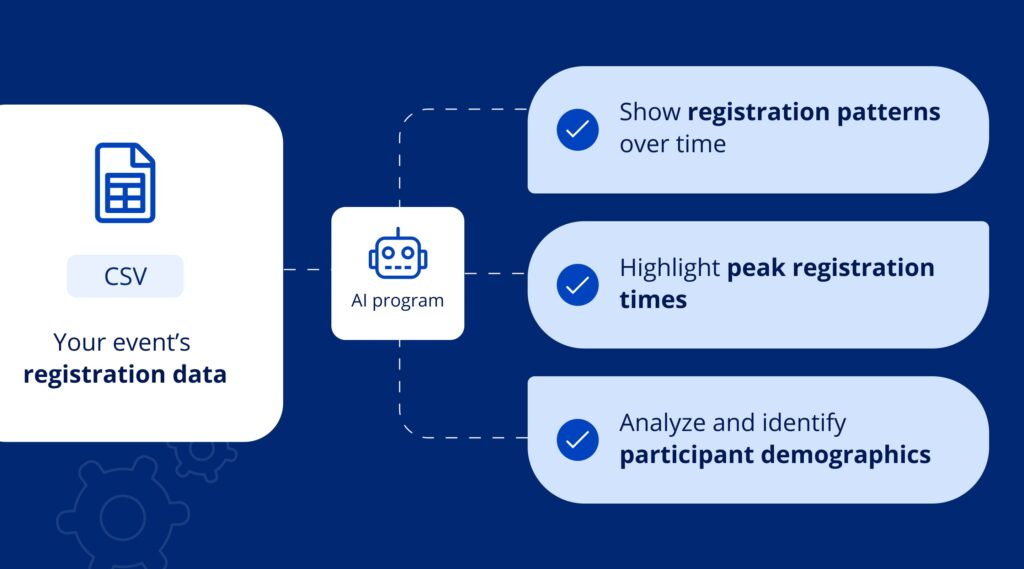
For example, you input your event’s registration data into ChatGPT. You can prompt it to analyze the data and identify trends like participant demographics, peak registration times and predicted turnout that you can use to optimize event planning in the future.
ChatGPT can also analyze participant and volunteer feedback from post-event surveys, providing instant summaries of key themes and sentiments. These summaries will help you understand the event experience so you can make data-driven decisions for future races.
By using ChatGPT for data analysis, you turn raw data into actionable insights in no time to make informed decisions that will enhance your participant experience and refine your strategy.
How to use ChatGPT to analyze your event data:
1. Prepare Your Data: Ensure your data is clean and well-structured in a spreadsheet (i.e., clear headers and no missing values).
2. Export Your Data: Save your spreadsheet (e.g., Excel, Google Sheets) as a CSV file.
3. Upload the CSV: Use the file upload option in ChatGPT (if supported) or manually copy and paste rows from your spreadsheet into the chat.
4. Explain Your Data: Provide a brief description of the data, such as what each column represents (e.g., registration numbers, participant feedback, etc.).
5. Ask for Analysis: Clearly state what insights or analysis you need (e.g., “Summarize participant feedback trends” or “Show registration patterns over time”).
6. Refine Results: If needed, ask for further breakdowns or specific details based on the initial analysis (e.g., “Highlight peak registration times”).
7. Export Results: Copy and paste the analysis into a new document or spreadsheet for future reference.
Final Thoughts
Artificial intelligence shouldn’t be intimidating. Instead, if you embrace it, AI tools will make you a more efficient endurance event organizer and help you create even better experiences for your participants.
The key is balance. You can use AI tools to streamline tasks like content creation and data analysis but your experience, expertise, and connection with your participants are the most important tools at your disposal.
Discover how to combine these tools and your endurance events will always stand out.

What’s new at Race Roster?
Visit our what’s new page for the most noteworthy Race Roster updates!